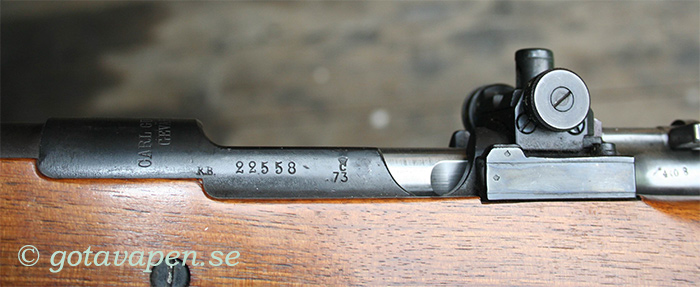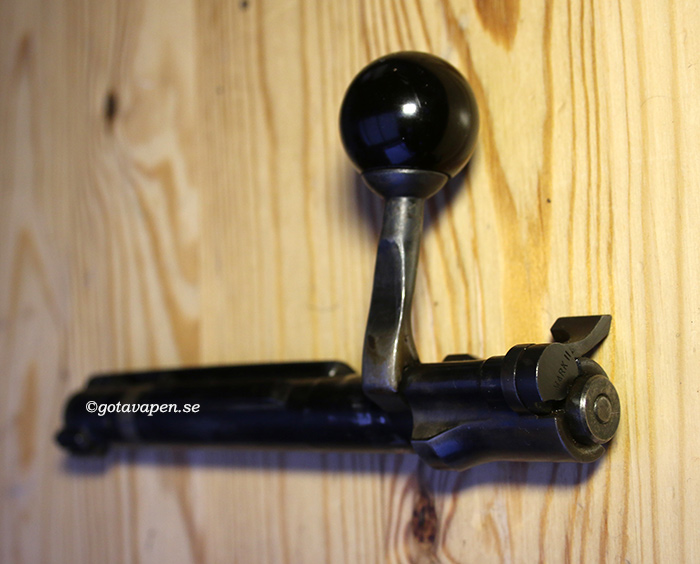|
The CG63 match rifle
was used by members of the rifle organisation
'Frivilliga Skytterörelsen' (FSR).
The CG 63 were built by Carl Gustaf, from surplus m/94 carbines and m/96
rifles. It featured a new free-floating heavy barrel, a new pistol-grip stock
and a micrometer aperture sight. The cocking piece was modified to reduce mass
and stroke. Length of stroke for firing pin was shortened from 25,4 mm to 18 mm.
The trigger was ribbed, the trigger guard was serrated and on m/94
actions the handle was straighted out. The sights could be of different designs;
Elit, Söderin, GF,
Fäldt, Pramm, Hellqvist, Lyman etc.
Many changed their
barrels for Schultz & Larsen barrels instead.
|
Data for the CG 63
|
| Weight |
4,5 - 4,7 kg
|
| Length over all |
1245 mm |
| Length of stock |
314 mm |
| Barrel length |
740 mm |
| Barrel twist of rifles |
220 mm |
| Barrel diameter |
19 mm |
| Trigger pull |
1,8 ±0,2 kp |
The Swedish Army used this rifle as the Gevär 6.
The only difference was that Gevär 6 had a short cleaning rod beneath the barrel.
CG 63 Junior

CG63 Junior rifle
in .22LR


Wooden stock for
CG63 Junior rifle in .22LR
A rifle for young
shooters also exist called CG63 Junior in .22LR with the same look
alike and basic specifications CG 63 rifle in 6,5x55 mm or 7,62x51
mm.
CG73
1973 came an improved stock for CG
63. The rifle was then designated CG 73. This rifle was never
considered to be really different model from CG63

CG73 with long stroke of firing pin

CG73 with with Carl Gustaf Stads stamping.
FSR CG80
The later CG 80 uses the same Mauser action, but got a better stock and an
even heavier barrel.

There were made several tests with different variations
on the same theme.

A test rifle built on the stronger receiver without
recess for thumb in 7.62x51 NATO.
The scope is not original.

CG80 bolt with altered safety
The last of the FSR rifles based on the
Swedish Mauser system m/1896 was called FSR-89

FSR-89

Wooden stock left FSR 89
FSR was introduced the same year as SAUER
200STR was accepted for competition by FSR.

SAUER 200STR 6,5x55 mm (STR = Scandinavian
Target Rifle)

|
Data for SAUER
200 STR |
|
Mass |
5,428 g (11.967 lb) (700 mm barrel) |
|
Length |
1,185 mm (46.7 in) (700 mm barrel) |
|
Barrel length |
670 mm (26.4 in) (6.5×55mm)
700 mm (27.6 in) (6.5×55mm)
740 mm (29.1 in) (6.5×55mm) |
|
Width |
102 mm (4.0 in) |
|
Height |
223 mm (8.8 in) |
|